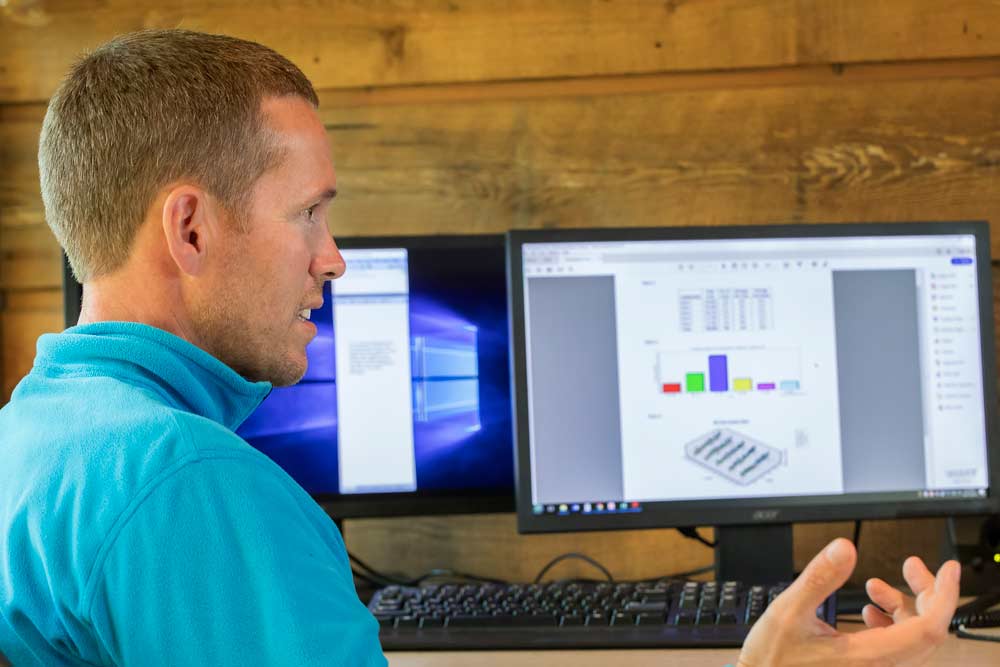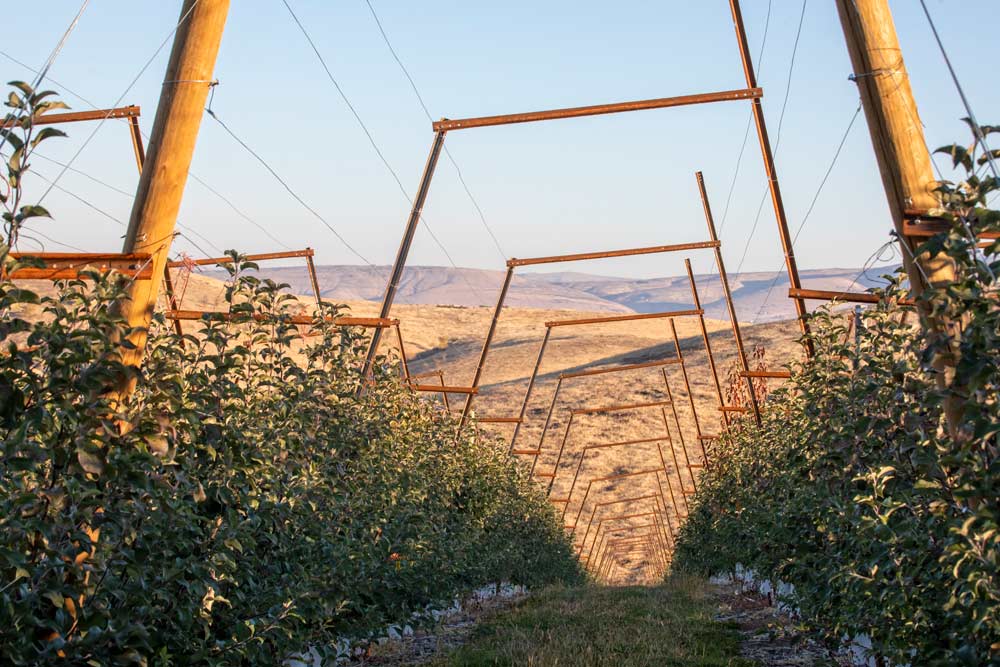
Dan Plath shows several forms of data management and crop estimation tools and spreadsheets at his office at Washington Fruit and Produce Co. headquarters in Yakima, Washington. (TJ Mullinax/Good Fruit Grower)
Dan Plath farms by the data.
He frequently responds to this reporter’s questions about horticultural decisions with “based on our return-on-investment calculations…”
Everyone in the industry says that, but the difference with Washington Fruit and Produce Co. is that “they actually do it,” said grower and longtime family friend, Charlie de la Chappelle.
Carefully considered farming is a family tradition, but new advances in data collection and analysis could provide even more insight into improvement, Dan said.
When asked what he’s learned from farming with his nephews, Dan and Nick, Cliff Plath said, “Well, they sure are good with spreadsheets.”
Over the past six years or so, Washington Fruit has made great strides in improving yields, fruit quality and return bloom using a data-intensive approach to crop load management, Dan said.
Managers develop a target crop load for a block, using trunk cross-sectional area to set the goal for young trees, and use production history to guide the goals for older blocks. Then, just before pruning, they count buds on sample trees and slice them open to see how many are destined to be flowers on both the spurs and shoot tips.
Multiply the percent of floral buds by the total bud count and you get the potential crop load, Dan said.
Factor in how well each variety tends to set fruit, subtract a 10 percent margin of error to stay on the conservative side and then you know how much you need to prune.
But before a pruning crew sets out, managers will test a pruning strategy and reassess the resulting bud counts, running the calculations sometimes several more times, until the pruning approach yields the targeted results, consistently.

Washington Fruit has installed V-trellis systems to support all of its new apple plantings, including this young Honeycrisp-grafted block at Plath Ranch, atop Rattlesnake Ridge in the Yakima Valley. (TJ Mullinax/Good Fruit Grower)
“Having the numbers on the computer are great, but you still have to go out and see what’s really there,” Dan said. “Until you prune, collect the data again, and put it in here to analyze it, you don’t know how it’s going to come out.”
Once the pruning crews are at work, managers continue to take sample bud counts to ensure the strategy remains on target.
They repeat the same counting process when the buds begin to push, to guide hand blossom thinning. To account for the variability in canopy size across the block, they also use three size categories to get flower targets. They repeat the process again for green fruit thinning.
This means spreadsheets upon spreadsheets, and the data included has grown over the years as more metrics were added.
“I’m trying to minimize the disconnect between what we do in the field and what the computer captures,” Dan said. After years of adding more data to his spreadsheets, he said he believes he’s dialed in the process. “We made this huge improvement, but we’ve picked all the low hanging fruit. To continue to improve from here is tougher.”
That’s why he’s excited about new crop load analysis technology from United Kingdom-based Intelligent Fruit Vision. Washington Fruit tested the system — two cameras and a high-powered computer mounted to an ATV to scan the canopy — in two blocks this year, and when he talked to the Good Fruit Grower, Plath was eager to compare the data from IFV to his harvest data.
“If this works, we can get so much more data, much more efficiently,” he said. The company markets the technology as something growers will use to scan every row in every orchard, but Plath rejected that idea in favor of a sampling approach to calculate yield and fruit size. “If I just go up and down a few rows in each block, I’m going to have way more data than I do now.”
The computer vision system won’t replace pruning based on bud count, but IFV says that in a few years the technology will be able to analyze bloom and green fruit enough to guide thinning strategies. Currently, it collects preharvest data on yield and fruit size.
“As a farmer, I’m excited for how this data would improve our horticultural practices,” Dan said. “But it’s valuable information for our sales and packing teams, too.” •
-by Kate Prengaman






Leave A Comment